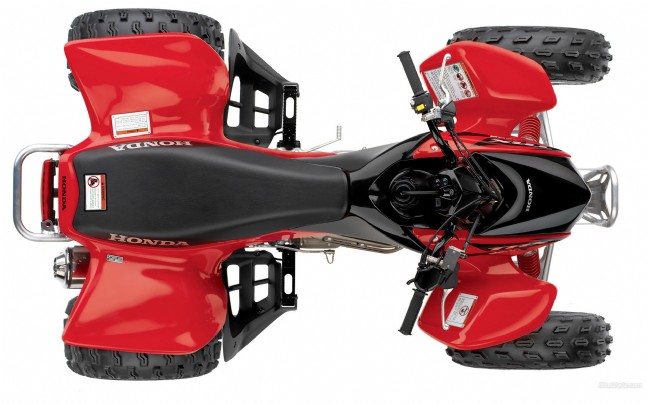Important Safety Information: Recommended for riders 16 years of age and older. Honda recommends that all ATV riders take a training course and read their owner's manual thoroughly.
Download Brochure
Loading
BASE MSRP $9,199
BUILD DETAILS
BASE MSRP $9,899
BUILD DETAILS
BASE MSRP $10,399
BUILD DETAILS
BASE MSRP $9,299
BUILD DETAILS
Available on select FourTrax utility ATVs, our Automatic DCT takes care of the shifting so you don’t have to.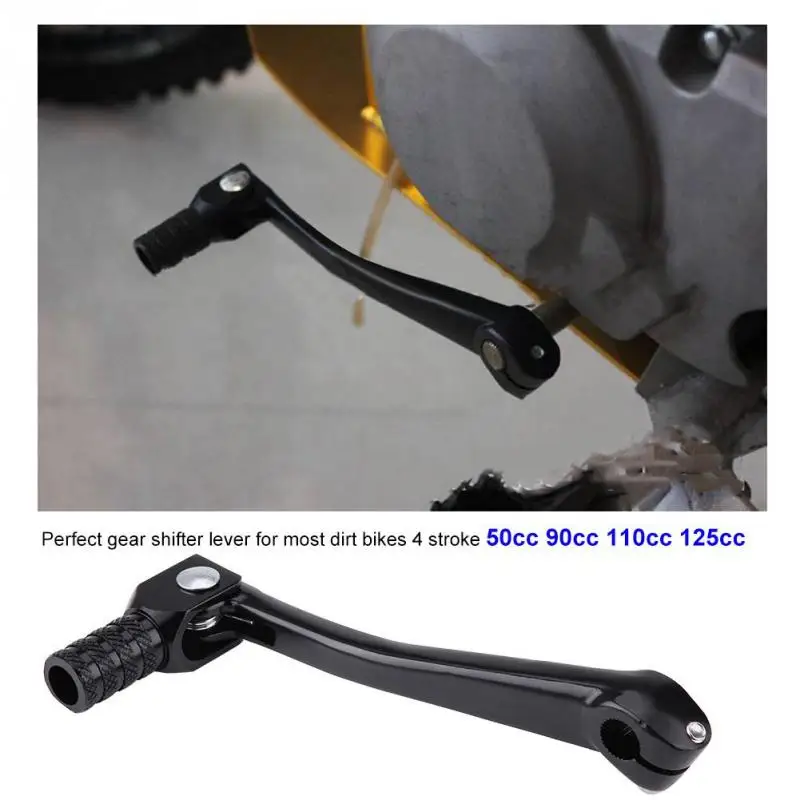
Every Foreman Rubicon model features a tough 518cc engine with the horsepower and torque you need for great performance. This power also gives it better hill-climbing ability. Bottom line: Work or play, this is one ATV that always delivers!
Available on our Automatic DCT models, this single lever is convenient and easy to operate. It’s especially useful when you have to shift from forward to reverse repeatedly, like when you’re plowing snow.
Prior Model Year Shown
The Rubicon’s racks feature strong steel construction and a large flat area.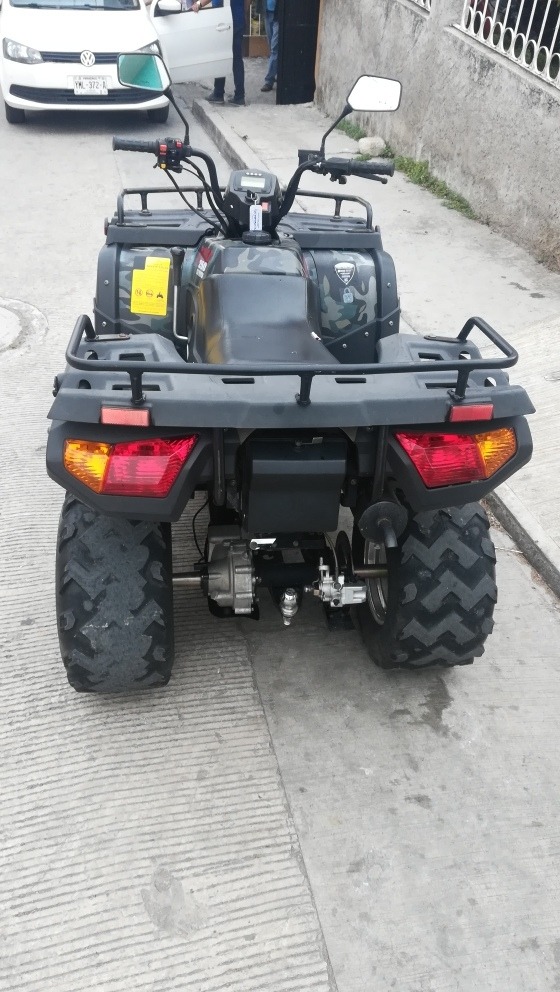 Better still, they’re designed so it’s easy to attach and remove cargo boxes and other accessories in our Honda Pro-Connect™ line, adding to your Rubicon’s versatility.
Better still, they’re designed so it’s easy to attach and remove cargo boxes and other accessories in our Honda Pro-Connect™ line, adding to your Rubicon’s versatility.
The Rubicon’s Independent Rear Suspension (IRS) returns two big benefits: First, it helps ensure constant tire contact with the ground for superior traction; second, it gives you a smooth ride over rough terrain, so you don’t get beat up on the trail.
Loading
DCT EQUIPPED RANCHER SHOWN
This is more than just an automatic.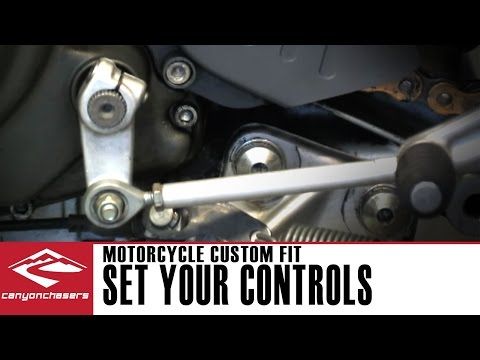 It’s technology that gives your ATV some huge real-world advantages.
It’s technology that gives your ATV some huge real-world advantages.
DCT EQUIPPED RANCHER SHOWN
With smooth power, true compression braking and optimal traction everywhere, you get even better control.
DCT EQUIPPED RANCHER SHOWN
Smooth power delivery means you can motor up and over large rocks at speeds that let you plan your next move.
This is tough, reliable Honda technology at its best, proven for years in hundreds of thousands of units.
Because our DCT is so efficient, more power gets to the ground. Plus, there are no belts to slip, break, or burn up.
Every DCT offers a Manual Mode where you can shift on command with a pair of paddle-type shifters mounted on the handlebars.
BASE MSRP $7,799
BUILD DETAILS
BASE MSRP $7,599
BUILD DETAILS
BASE MSRP $8,299
BUILD DETAILS
BASE MSRP $8,799
BUILD DETAILS
BASE MSRP $9,499
BUILD DETAILS
BASE MSRP $9,999
BUILD DETAILS
BUILD
BUILD
Accessorized Model Shown
 They offer no-nonsense performance, starting with their powerful 518cc engines, tough steel front and rear racks, long-travel suspension, and so much more. With three models for 2023, it’s easy to choose the right one, but here’s something to think of: Every Foreman here uses a swingarm rear suspension that’s perfect for hard work and towing. If you’re looking for a machine with Independent Rear Suspension (IRS), then check out our Foreman Rubicon models.
They offer no-nonsense performance, starting with their powerful 518cc engines, tough steel front and rear racks, long-travel suspension, and so much more. With three models for 2023, it’s easy to choose the right one, but here’s something to think of: Every Foreman here uses a swingarm rear suspension that’s perfect for hard work and towing. If you’re looking for a machine with Independent Rear Suspension (IRS), then check out our Foreman Rubicon models. Important Safety Information: Recommended for riders 16 years of age and older. Honda recommends that all ATV riders take a training course and read their owner's manual thoroughly.
Download Brochure
Loading
BASE MSRP $8,599
BUILD DETAILS
BASE MSRP $8,849
BUILD DETAILS
BASE MSRP $7,899
BUILD DETAILS
We gave the FourTrax Foreman a tough 518cc engine that cranks out plenty of horsepower and torque. That enhances the Foreman’s overall performance, and also gives your Foreman excellent hill-climbing ability.
That enhances the Foreman’s overall performance, and also gives your Foreman excellent hill-climbing ability.
Available on our Electric Shift Program (ESP) model, this single lever is a big improvement when it comes to convenience and ease of operation. It’s especially useful when you have to shift from forward to reverse repeatedly, like when you’re plowing snow.
Prior Model Year with Pre-production Tires ShownThe Foreman 4x4 rear swingarm with its solid axle provides superior capability for towing and hauling. Its long suspension stroke and plush seat let you tackle your favorite trail or the toughest chores in comfort all day long.
Prior Model Year with Pre-production Tires Shown
The Foreman’s racks feature strong steel construction and a large flat area. Better still, they’re designed so it’s easy to attach and remove cargo boxes and other accessories in our Honda Pro-Connect™ line, adding to your Foreman’s versatility.
Better still, they’re designed so it’s easy to attach and remove cargo boxes and other accessories in our Honda Pro-Connect™ line, adding to your Foreman’s versatility.
Loading
Articles
02 Dec
Any wheeled vehicle - from a bicycle to a multi-ton truck - has a transmission in its device: a system that transmits rotation from the engine to the wheels.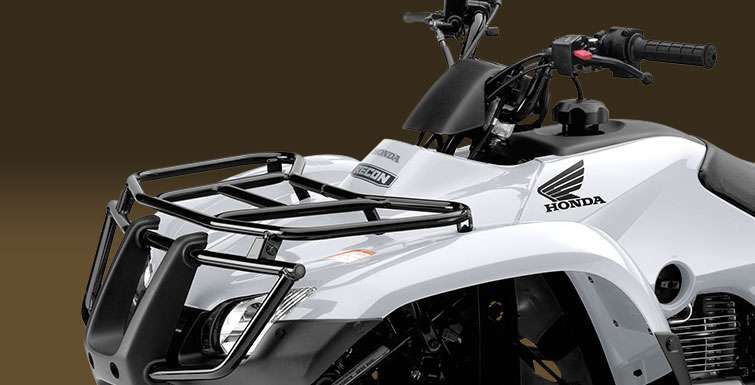 The operation of the transmission - and therefore the speed of driving - can be controlled by shifting gears.
The operation of the transmission - and therefore the speed of driving - can be controlled by shifting gears.
Gear shifting is organized differently in each mode of transport. In the article below, we will tell you exactly how to shift gears on ATVs, and what gearboxes are found on such equipment.
Gearboxes for ATVs can be of two types:
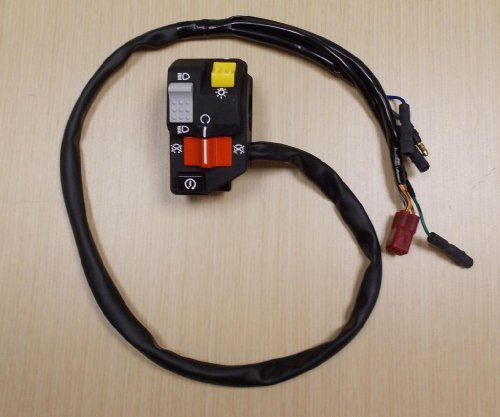
Rare and mostly found in older models, but other variations can be found. For example - "automatic" with the ability to manually shift gears.
Manual ATVs are a little more difficult to drive (at least at first, until you get used to it), but you can more accurately select the appropriate mode. And vice versa: CVT "boxes" are much easier to operate, they are easy to master for a beginner who gets behind the wheel of an ATV for the first time. But on the other hand, with active driving along a route with variable difficulty, riding a CVT will be a little less convenient.
For example: you are driving on a flat packed dirt road on H and you see a large stretch of muddy road ahead with deep mud (or a steep hill, or bumps, or stones). You will have to come to a complete stop and shift to L, drive through mud, and when you get back on a dry road, come to a complete stop again and shift back to H. , like motorcycles, and a manual clutch lever on the handlebar on the left.
The foot lever device can be of two types:
The shift itself is carried out in the same way as on motorcycles:
 If you have experience driving any vehicle with a manual transmission, you will quickly get used to an ATV with such a gearbox.
If you have experience driving any vehicle with a manual transmission, you will quickly get used to an ATV with such a gearbox. When exactly to switch speeds up and down is determined by the tachometer, speed, road complexity, weight of the load taken and the characteristics of the ATV itself (power, weight).
CVT gearboxes are much more common on ATVs. The clutch in them does not need to be squeezed out, and the “mode” of driving forward is selected from two (most often) options: in high (suitable for driving on an easy route) or in low (for difficult sections, steep climbs and towing) gears.
An important difference from driving in a manual transmission: switching between L and H is carried out only when the ATV is completely stopped, with the brake applied. To select a mode, move the knob to the desired position. Switching between L and H on the go is impossible.
The rest of the gears - park, neutral and reverse - of course, are also included when the ATV is standing still.
Cars
October 25, 2010
With all the wealth of choice, you will not find an alternative to the Honda TRX420 FA ATV. No competitor offers such a set of technologies implemented in one model... What is so special about this medium-sized utilitarian and why is it not just a workhorse, but a breeding one?
Modern ATVs from different manufacturers are essentially Dolly sheep, and any Honda is like that girl from the joke - "I'm not like that, I'm waiting for the tram. " And it's not just that you won't find a traditional V-belt variator on any ATV of this brand. Do not think that "Honda" engineers do not know how to do it. Even as they know how, it has long been used by them on scooters, as well as on cars. These guys are just going their own way.
" And it's not just that you won't find a traditional V-belt variator on any ATV of this brand. Do not think that "Honda" engineers do not know how to do it. Even as they know how, it has long been used by them on scooters, as well as on cars. These guys are just going their own way.
However, back to the hero of our material. With the name TRX420, two completely different modifications are produced. We will talk about the version that carries the letters FA in the index.
Speaking of ATV brand Honda, the first thing to say about the transmission. After all, consider that each model has its own gearbox, starting from a practically automobile “automatic” with a torque converter and ending with a “mechanics” with a semi-automatic clutch.
Despite the moped look, the dashboard is by no means simple
button with arrows serves to select transmissions in manual mode
 Automated mechanical 5-speed transmission HFT (Human Freendly translated means "friendly"). From the user's point of view, it is convenient in that it shifts gears quickly and smoothly. Moreover, you can choose either automatic switching mode, or manual, activated by buttons on the steering wheel. And from the point of view of a garage-trained auto mechanic, HFT is a quiet horror. Judge for yourself. Gear shifting is controlled by two hydraulically controlled multi-plate clutches on two concentric input shafts. Another clutch - centrifugal with a roller overrunning clutch, located on the crankshaft - provides a start from a place and engine braking. And the shift mechanism is driven by an electric motor, which turns the copy shaft through the gear reducer and ratchet mechanism, along the grooves of which the gear shift forks move. The gears are engaged by cam clutches. The hydraulic system has two oil pumps and a dozen different valves. The electronic control unit reads information from the sensors for the speed of rotation of the front and rear axles, the gear engaged sensor, the angle of rotation of the shift mechanism, crankshaft speed and several more sensors common to an injection engine.
Automated mechanical 5-speed transmission HFT (Human Freendly translated means "friendly"). From the user's point of view, it is convenient in that it shifts gears quickly and smoothly. Moreover, you can choose either automatic switching mode, or manual, activated by buttons on the steering wheel. And from the point of view of a garage-trained auto mechanic, HFT is a quiet horror. Judge for yourself. Gear shifting is controlled by two hydraulically controlled multi-plate clutches on two concentric input shafts. Another clutch - centrifugal with a roller overrunning clutch, located on the crankshaft - provides a start from a place and engine braking. And the shift mechanism is driven by an electric motor, which turns the copy shaft through the gear reducer and ratchet mechanism, along the grooves of which the gear shift forks move. The gears are engaged by cam clutches. The hydraulic system has two oil pumps and a dozen different valves. The electronic control unit reads information from the sensors for the speed of rotation of the front and rear axles, the gear engaged sensor, the angle of rotation of the shift mechanism, crankshaft speed and several more sensors common to an injection engine.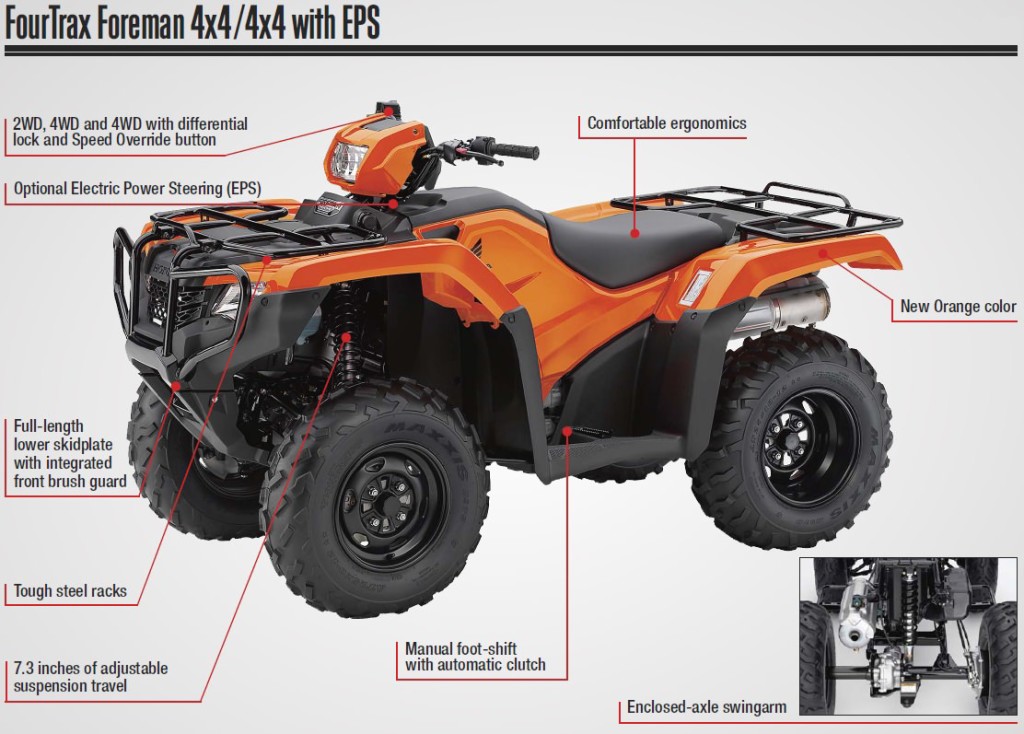 Impressive? Yeah, it looks like Honda will be trying out solutions on ATVs that will later be applied in its automotive division.
Impressive? Yeah, it looks like Honda will be trying out solutions on ATVs that will later be applied in its automotive division. This switch controls whether the transmission is in manual or automatic mode.
The front axle is manually activated by a cable-actuated lever that moves the engagement dog clutch. The advantages of HFT are that there is practically no interruption in the power flow at the moment of gear shifting. Skeptics will look for disadvantages related exclusively to operation and maintenance: for example, special requirements for oil quality, cleanliness inside, and the absence of mechanical damage to sensors and wiring. It is noteworthy that it will not be easy for a pilot to break this system with inept actions - electronic "fool protection" is provided here. Well, if someone is unlucky and far from civilization, electronics or hydraulics still received mechanical damage, in a special “emergency mode” TRX will most likely take the owner home.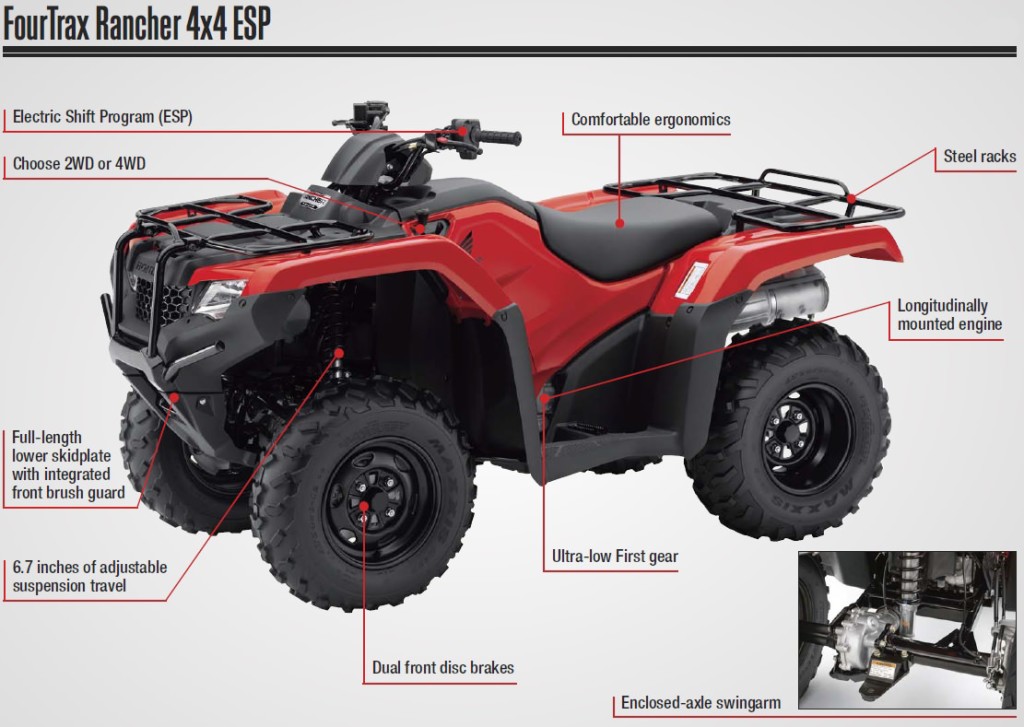
START GUARANTEED
The 420cc fuel injected engine is an evolution of the carbureted 400cc engine. In addition to the injection that appeared, the cylinder head has changed, which gave an increase in traction in a wide rev range. The motor is really very elastic, with smooth characteristics. Yes, and it pulls better than quadrics from Southeast Asia with larger engines.
It should be noted that the electric starter is duplicated by a manual starter (this is, however, an option), which is very rare for an injection ATV. And where else can you see a standard protective mesh in front of the radiator? Moreover, cutouts are specially made in the front plastic for the convenience of washing this mesh. By the way, during the test there was a 35-degree heat. The cooling system did not even notice this test. She worked for herself like a bunny from an advertisement for batteries. (From experience, I’ll say that for the most part, competitors do not tolerate such temperatures well, “pleasuring” the eye with an overheating lamp. ) However, when the electric fan was turned on, the right leg felt like a chicken on the grill.
) However, when the electric fan was turned on, the right leg felt like a chicken on the grill.
It seems that Honda ATV is a testing ground for new technologies. The suspension range is enough for dynamic driving, and for moving through plowed abandoned fields. While the ride height of 165mm isn't outstanding, neither is the suspension travel.
Traditional braking system. There are two disc brakes in front, one disc in the back, clamping the cardan shaft. Control of the brake system without any combined newfangled: levers on the steering wheel and a backup foot of the rear brake under the right foot. There is no power steering in the steering system, but in 4x4 mode, thanks to the Surer-Trac front differential, in which internal friction varies depending on the amount of transmitted torque, the steering does not become heavy.
Yes, this ATV has a wagon and a bogie with atypical solutions. How does this scare off domestic buyers? And the fact that it is not clear where to repair this exotic, in which case, except from official dealers.